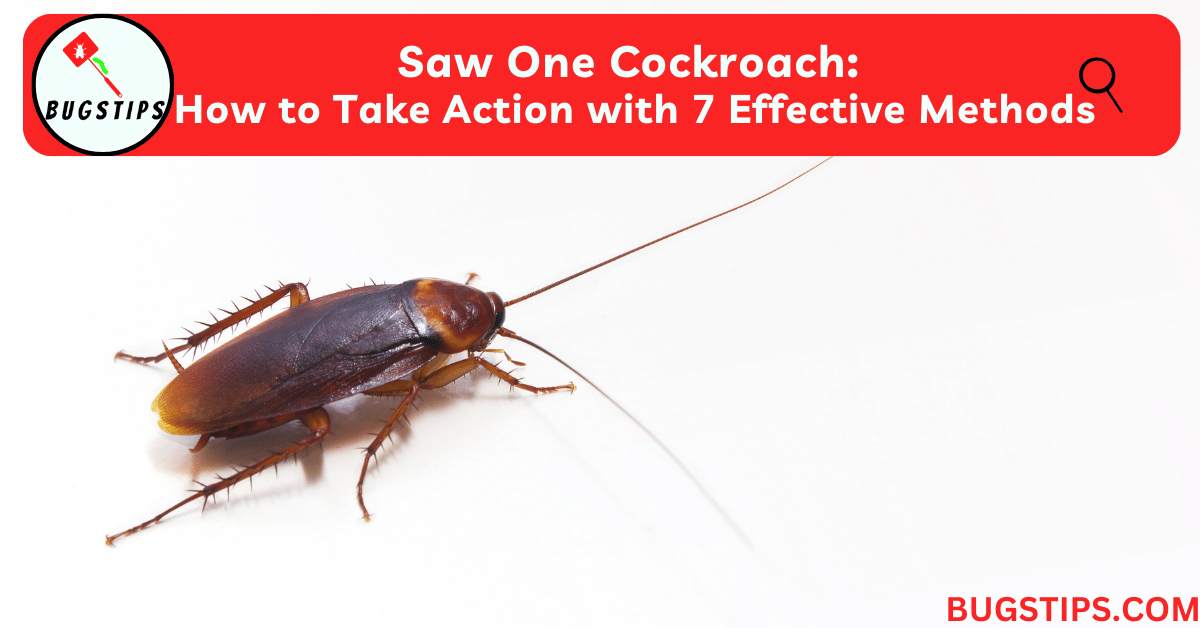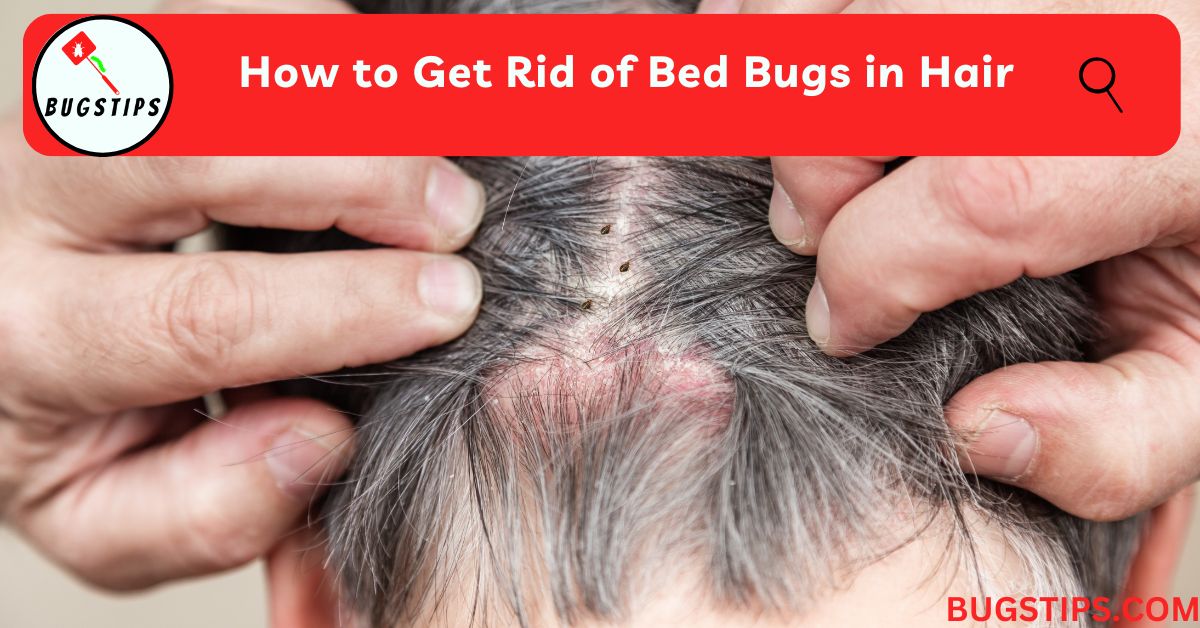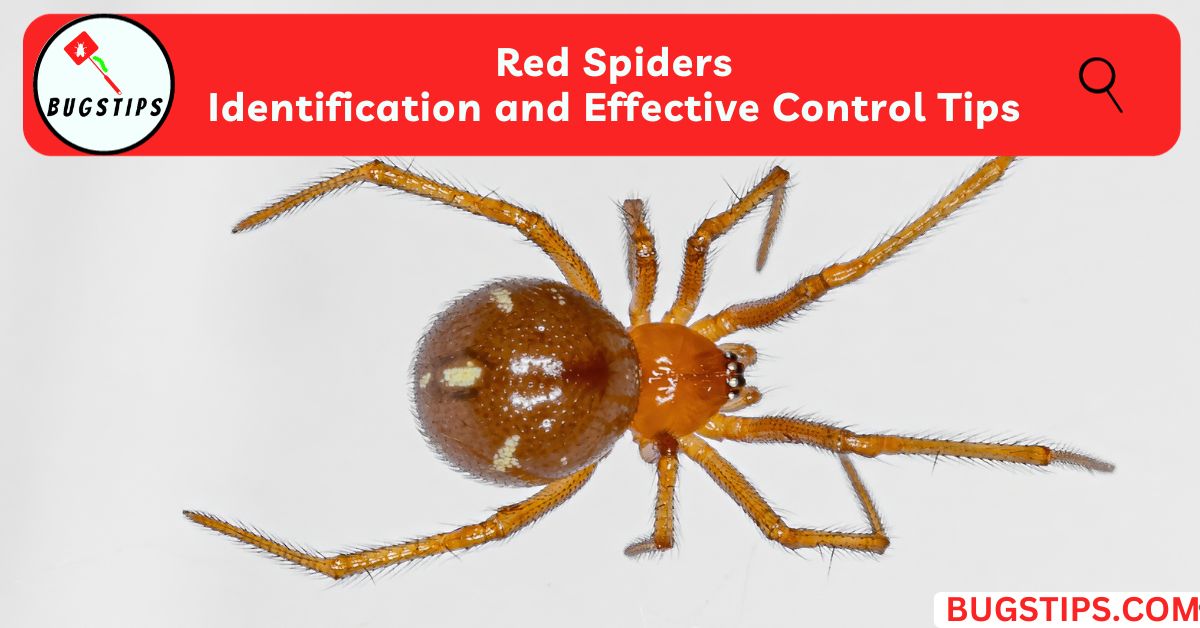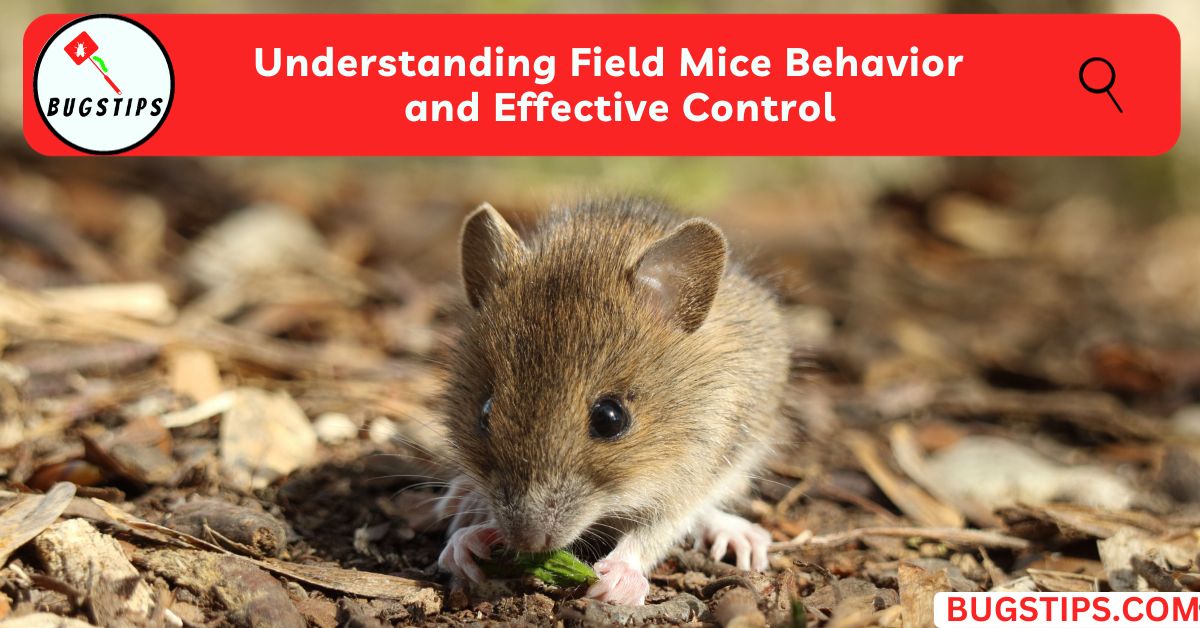This post may contain affiliate links which means as an Amazon Associate, this site may earn a small commission on qualified purchases made through links at no extra cost to you. Learn more on Affiliate Disclosure
Spotting a cockroach in your home can be alarming, to say the least. While seeing one cockroach may not necessarily mean you have a full-blown infestation, it’s important to take immediate action to prevent the problem from getting worse.
Cockroaches are nocturnal creatures that prefer to scavenge for food and water at night. If you saw one cockroach during the day, it could be a sign that the nest has become overcrowded and they are being forced to venture out in search of resources.
In this article, we will explore the potential reasons for cockroach sightings in your home, what to do if you saw one cockroach, and how to prevent a full-blown infestation from taking hold. By taking swift action and following the advice of experts, you can help keep your home free of these unwanted pests.
What Does Seeing One Cockroach Mean?
Spotting a cockroach in your home can be alarming, but don’t panic just yet. Seeing one cockroach does not necessarily mean you have a full-blown infestation on your hands. However, it’s important to take the sighting seriously and take action to prevent any potential infestation from growing out of control.
There are several reasons why you may have seen a cockroach in your home. Roaches are attracted to warm, humid environments with access to food and water. They may have entered your home through cracks or gaps in the walls, floors, or foundation. They may also have hitched a ride on furniture or other items brought into your home.
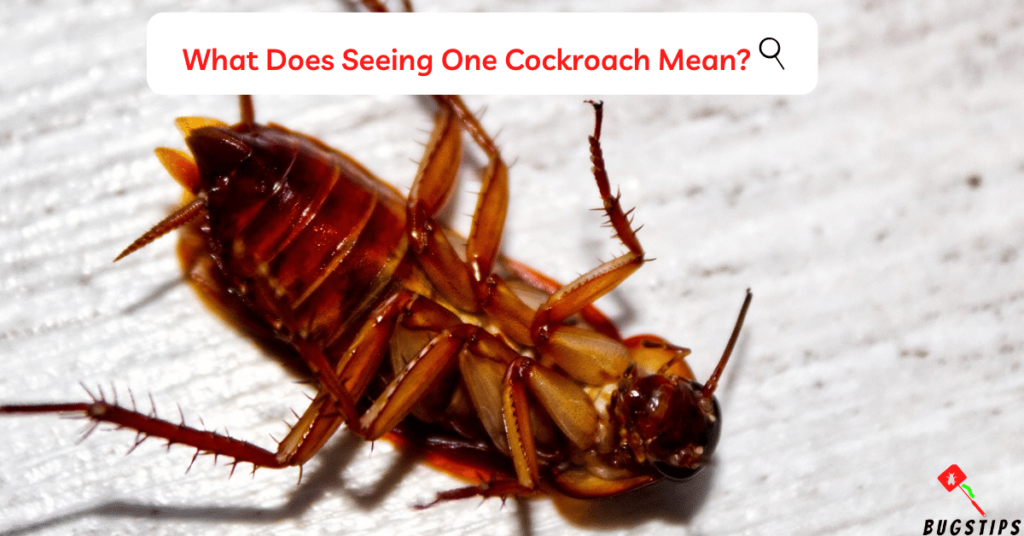
If you’ve only seen one cockroach, it’s possible that it was just passing through and hasn’t established a nest in your home yet. However, it’s also possible that more cockroaches are hiding in your home, especially if you’ve seen the cockroach during the daytime. Roaches are nocturnal and prefer to scavenge for food at night, so if you’ve seen one during the day, it may indicate that the nest has become overcrowded.
It’s important to take action as soon as possible to prevent a potential infestation. Start by thoroughly cleaning your home and eliminating any sources of food or water that may be attracting cockroaches. Seal up any cracks or gaps in your home to prevent roaches from entering. Consider using traps or baits to catch any cockroaches that may be hiding in your home.
Why You Shouldn’t Ignore a Single Cockroach Sighting
As we mentioned above spotting a single cockroach in your home can be alarming, but it’s important not to ignore it. While one cockroach may not seem like a big deal, it can be a sign of a larger problem. Here are a few reasons why you should take a single cockroach sighting seriously:
- Cockroaches are social insects, which means that where there’s one, there is likely more hiding nearby.
- Cockroaches are nocturnal and prefer to stay hidden during the day, so if you see one during daylight hours, there is likely much more hiding in the shadows.
- Cockroaches can carry diseases and bacteria that can be harmful to humans, including salmonella and E. coli.
- Cockroaches can also trigger allergies and asthma symptoms in some people.
Ignoring a single cockroach sighting can lead to a larger infestation, which can be much more difficult and expensive to deal with. It’s important to take action as soon as possible to prevent the problem from getting worse.
While a single cockroach sighting may not necessarily mean that you have a full-blown infestation. it’s better to be safe than sorry. Taking steps to prevent cockroaches from entering your home and eliminating any that you do see can help prevent a larger problem down the line.
Do Cockroaches Travel Alone?
Cockroaches are social insects that prefer to live in groups. They are known to travel in small family groups once they find a suitable place to settle. Female cockroaches can produce as many as 30-40 cockroaches at a time, meaning their colony grows rapidly.
However, it is rare to see a cockroach wandering around alone. If you see one, there is a high chance that there are more nearby. Cockroaches typically don’t wander off alone. When they are searching for a place to form a new nest, cockroaches usually travel in groups. So, if you spot a cockroach alone, it is likely that the rest of the family is nearby.
Moreover, cockroaches are nocturnal insects, which means they are most active at night. During the day, they hide in dark and damp places such as cracks, crevices, and under appliances. They usually come out at night to search for food and water. If you see a cockroach during the day, it could be a sign that there is a severe infestation in your home.
You’ll Also Like – Fascinating Facts About Flying Cockroaches
What to Do if You Saw One Cockroach
Conducting a Thorough Inspection
If you saw one cockroach in your home, it’s important to conduct a thorough inspection to see if there are any more hiding out. Cockroaches are known to be stealthy creatures, so you may have an infestation without even realizing it.
To conduct a thorough inspection, start by checking the areas where you saw the cockroach. Look for any cracks or gaps where the cockroach may have entered your home. Check the area for any signs of cockroach droppings or egg casings.
Next, move on to other areas of your home, paying close attention to areas where food is stored or prepared. Check behind appliances, such as refrigerators and stoves, and inspect any cluttered areas or stacks of papers.
It’s also a good idea to inspect your home’s plumbing, as cockroaches are known to enter homes through pipes. Check for any leaks or standing water, as well as any areas where pipes or plumbing fixtures may be damaged.
By conducting a thorough inspection, you can help identify any potential problems and take steps to prevent any future cockroach infestations.
Exploring Common Hiding Spots of Cockroaches
Cockroaches are known to hide in many places throughout your home. Finding their hiding spots is essential to control their spread and prevent future infestations. Here are some common hiding spots to look for:
Cockroaches are known to hide in many places throughout your home. Finding their hiding spots is essential to control their spread and prevent future infestations. Here are some common hiding spots to look for:

Kitchens and Bathrooms
Cockroaches are attracted to food, water, and warmth, making kitchens and bathrooms popular spots for them to hide. They can often be found in the areas behind and under appliances such as refrigerators and stoves. They can also hide inside cabinets and drawers. Be sure to check these areas carefully, as cockroaches are experts at hiding.
Cracks and Crevices
Cockroaches can enter your home through small gaps or cracks in walls, floors, or foundations. They can fit through spaces as small as a quarter of an inch. Inspect your home thoroughly and seal any openings you find. Use caulk or other sealing material to ensure that there are no gaps or holes.
Moist Environments
Cockroaches thrive in damp environments, such as basements and crawl spaces. Check these areas for signs of cockroach activity, such as droppings or shed skins. If you find evidence of cockroaches, clean the area thoroughly and reduce moisture levels as much as possible. Use dehumidifiers or fans to help dry out damp areas.
Cluttered Areas
Cockroaches love cluttered areas where they can hide and breed without being disturbed. Clutter provides many hiding spots and can also make it difficult to identify cockroach activity. Keep your home as clean and clutter-free as possible. Remove piles of papers, boxes, and other items that can create hiding spots for cockroaches.
Pet Areas
Cockroaches are attracted to pet food and water, making your pet’s feeding area an ideal hiding spot. Be sure to clean up any spills or leftover food promptly. Store pet food in sealed containers and keep feeding areas clean and tidy.
Recognizing the Signs of Cockroach Activity in Your Home
If you’ve seen one cockroach in your home, chances are there may be others lurking around. To confirm their presence, keep an eye out for signs of cockroach activity. Some common signs include:
Fecal matter
Cockroaches also leave fecal matter behind, which can appear as small, dark, and cylindrical pellets. These droppings are often found in areas where cockroaches are active, such as in cabinets, drawers, and on countertops. If you notice this type of waste, it may be a sign that there are more cockroaches in your home than you initially realized. It’s important to note that these droppings can also cause allergic reactions in some individuals, so it’s best to clean them up promptly with gloves and a disinfectant solution.
Shed skins
Another sign of cockroach activity in your home is the presence of shed skins. Cockroaches will molt their exoskeletons as they grow, leaving behind these shed skins. They can often be found near areas where cockroaches are known to hide, such as in cracks and crevices, behind appliances, or in cabinets. These skins can vary in size depending on the age and species of the cockroach, but they are typically small and light brown. If you notice multiple shed skins in your home, it’s a good indicator that there may be a cockroach infestation present.
Musty odor
Another common sign of cockroach activity in your home is a musty or oily odor. Cockroaches emit a pheromone that can be detected by humans, and this odor can be particularly strong in areas where they are congregating. If you notice a strong, unpleasant smell in a certain area of your home, it’s possible that there could be a cockroach infestation. However, it’s important to note that this odor can also be caused by other factors, such as mold or mildew, so it’s important to thoroughly investigate the source of the smell before assuming it’s a cockroach infestation.
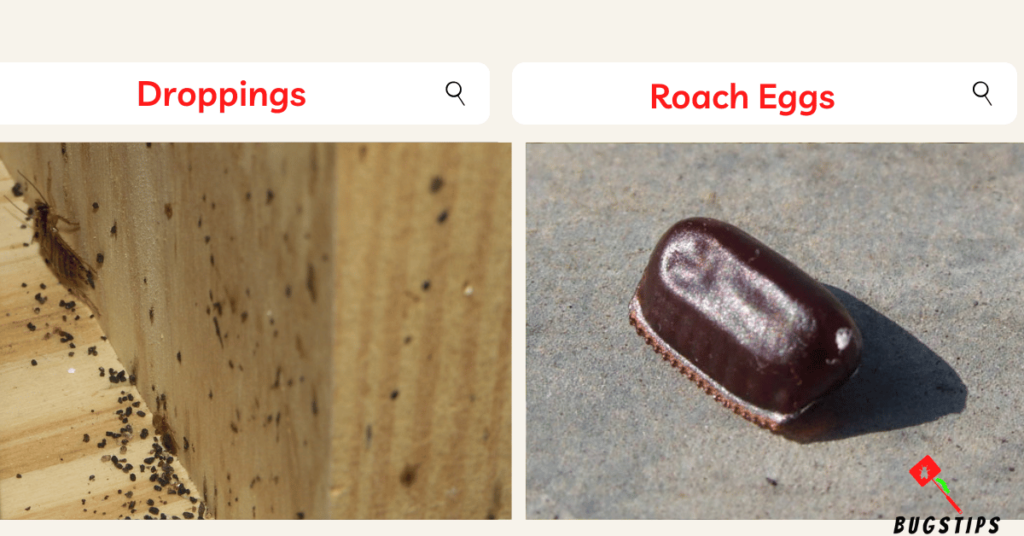

Grease marks
Cockroaches leave behind an oily residue that can appear as dark smears or streaks along walls, baseboards, and other surfaces. These marks are often found near areas where cockroaches are hiding or moving around. The grease marks are a result of the cockroach’s oily exoskeleton rubbing against surfaces as they move, leaving a visible trail. If you notice these marks in your home, it could be a sign of cockroach activity and it’s important to take action to prevent a potential infestation.
Egg cases
Cockroaches also leave behind egg cases as a sign of their activity in your home. These cases can often be found in areas where cockroaches are known to hide, such as in cabinets or under appliances. Egg cases are small and brown and can often be mistaken for small pieces of debris. If you find any egg cases in your home, it’s important to take immediate action to prevent a larger infestation from forming.
Getting Rid of Cockroaches
Now that you’ve identified signs of cockroach activity in your home, it’s time to take action and get rid of these pesky insects for good.
If you have spotted a cockroach in your home, it is important to take immediate action to get rid of them before it can reproduce and create a larger infestation. There are two main methods to get rid of cockroaches: natural options and chemical options. Both have their pros and cons, so it is important to choose the method that best suits your needs.
Natural Options
If you are looking for a natural and non-toxic way to get rid of cockroaches, there are several options available.
Peppermint oil
Peppermint oil is a natural insect repellent that can help repel cockroaches. To use peppermint oil to get rid of cockroaches, mix a few drops of peppermint oil with water in a spray bottle. Then, spray the mixture around areas where cockroaches are present, such as in the kitchen, bathroom, or any other areas where food is stored. The strong scent of peppermint oil will help to keep cockroaches away, but it may take some time to see results.
Bay leaves
Bay leaves are another natural option that can help repel cockroaches. To use bay leaves, simply place them in cabinets, drawers, and any other areas where cockroaches are present. Bay leaves have a strong odor that cockroaches dislike, and this can help to keep them away. However, it is important to note that bay leaves may not be effective for severe infestations.
Diatomaceous earth
Diatomaceous earth is a natural substance that is made up of fossilized remains of diatoms, which are microscopic organisms. This substance is non-toxic and safe for pets and children, but it can be effective at killing cockroaches. To use diatomaceous earth, simply sprinkle it around areas where cockroaches are present. The diatomaceous earth will dehydrate and kill the cockroaches by absorbing the moisture from their bodies.
But It is also important to note that natural options may take longer to see results, and they may not be effective for severe infestations. It is also important to keep in mind that while these natural options are safe for humans and pets, they can still be harmful if ingested in large amounts.
Chemical Options
Chemical options to get rid of cockroaches are fast-acting and effective for severe infestations. However, they are toxic and may harm pets and children if not used properly. It’s important to read and follow the instructions carefully when using chemical options to ensure safety.
Roach baits
Roach baits are a common chemical option used to get rid of cockroaches. They consist of small plastic containers filled with a gel that contains insecticide. Cockroaches are attracted to the bait, consume it, and then die. Roach baits are effective because they can target the entire colony of cockroaches, not just the visible ones. It is important to place the baits in areas where cockroaches are present and to follow the instructions carefully to ensure safety.
Related Article – How to Get Rid of Roaches in Yard: 10 Easy Tips and Tricks
Roach sprays
Roach sprays are another chemical option to get rid of cockroaches. They are easy to use and can quickly kill cockroaches on contact. However, they are also toxic and can harm pets and children if not used properly. It is important to read and follow the instructions carefully when using roach sprays.
When using roach sprays, it is best to spray in areas where cockroaches are present, such as cracks and crevices or behind appliances. It is important to avoid spraying near food or food preparation areas. Roach sprays can also be used as a preventative measure by spraying around the perimeter of the home or in areas where cockroaches may enter.
Roach sprays come in various formulations, such as aerosol cans or pump sprays. Some sprays are designed to kill on contact, while others may have a residual effect and continue to kill cockroaches for a while after application. It is important to choose the right type of roach spray for the infestation and follow the instructions carefully.
Roach foggers
Roach foggers, also known as bug bombs, are a type of chemical option used to get rid of cockroaches. These devices release a mist of insecticide into the air, which can kill cockroaches on contact. They are effective for severe infestations and can cover large areas, making them ideal for use in basements, attics, and crawl spaces.
When using roach foggers, it is important to read and follow the instructions carefully. This includes covering or removing any exposed food, dishes, and utensils, as well as removing pets and people from the area. After activating the fogger, it is recommended to leave the area and keep it closed for several hours to allow the mist to settle and dissipate.
It is important to note that roach foggers are a more toxic option and can be harmful to pets and children if not used properly. Therefore, it is recommended to use them as a last resort and to consider natural or less toxic options first
Insect growth regulators (IGRs)
Insect growth regulators (IGRs) are a type of chemical option used to control cockroach infestations. IGRs work by disrupting the normal growth and development of cockroaches, preventing them from reaching maturity and reproducing. They come in different forms, including sprays, baits, and concentrated solutions.
IGRs are effective for the long-term control of cockroach populations, as they target the reproductive cycle of pests. They also have low toxicity to humans and pets, making them a safer option for households with children and pets. However, IGRs may take longer to see results compared to other chemical options, and they may not work on adult cockroaches.
It is important to follow the instructions carefully when using IGRs, as overuse or misuse may result in resistance or toxicity. It is also recommended to use IGRs in combination with other control methods for a more comprehensive approach to cockroach infestation management.
Boric acid
Boric acid is another chemical option for getting rid of cockroaches. It is a white powder that can be sprinkled in areas where cockroaches are present. When cockroaches come into contact with boric acid, it will damage their exoskeleton and dehydrate them, leading to their eventual death.
Use boric acid with caution because when using boric acid it can be toxic if ingested by pets or children. It should only be used in areas that are inaccessible to pets and children, and the application should be kept to a minimum. It may take several weeks to see results with boric acid, but it can be an effective option for getting rid of cockroaches.
Related Article – How to Get Rid of Cockroaches Without Killing Them
Preventing a Cockroach Infestation After Spotting One
After following the previous steps to get rid of cockroaches, it’s important to take preventive measures to avoid future infestations. Just because you’ve spotted one cockroach doesn’t mean there aren’t more hiding in your home.
Cockroaches are persistent pests that can easily reproduce and spread if given the opportunity. Therefore, it’s crucial to take steps to prevent their return. So here we’ll discuss some simple and effective methods for preventing a cockroach infestation after spotting one.
Here are some steps you can take to prevent a potential cockroach infestation:
Eliminate food sources
Eliminating food sources is one of the most important steps to prevent a cockroach infestation. Cockroaches are attracted to food, especially those that are sweet, greasy, or high in protein.
Make sure to clean up any food crumbs or spills immediately, keep your kitchen clean and tidy, store food in airtight containers, and take out the trash regularly. Avoid leaving pet food out overnight, and clean up any spilled water or standing water in the sink or bathtub. By eliminating their food sources, you can greatly reduce the chances of a cockroach infestation.
Seal entry points
To prevent future cockroach infestations, it’s important to seal off any entry points that the pests may be using to gain access to your home. This can include gaps or cracks in walls, floors, doors, and windows.
You can use caulk or weatherstripping to seal these entry points and make it more difficult for cockroaches to enter your home. Additionally, make sure that any vents or pipes leading into your home are properly sealed. This will not only prevent cockroaches from entering your home, but it will also help to reduce energy costs by keeping your home properly insulated.
Reduce clutter
Reducing clutter is an important step in preventing a cockroach infestation. Cockroaches love to hide in dark, cluttered areas such as piles of clothes, stacks of papers, or boxes.
By reducing clutter and keeping your home organized, you can eliminate potential hiding spots for cockroaches. Be sure to regularly clean and declutter areas such as closets, basements, and garages. This will also make it easier to spot any potential signs of a cockroach infestation and take action quickly.
Fix leaks
Fixing leaks is an important step in preventing a cockroach infestation. Cockroaches need water to survive, so fixing leaks and keeping areas dry can make your home less attractive to them.
Inspect your plumbing and fix any leaks you find promptly. Additionally, make sure to dry any wet areas, such as sinks or showers, and keep them well-ventilated. By removing sources of water, you can make your home less hospitable to cockroaches and reduce the risk of future infestations.
Use sticky traps
Sticky traps can be a helpful tool to prevent future cockroach infestations. These traps use a sticky adhesive to capture and trap cockroaches. They can be placed in areas where cockroaches are likely to travel, such as along baseboards, behind appliances, and in cabinets.
Sticky traps are an effective and non-toxic option for monitoring and controlling cockroaches. They can also be used to determine the severity of an infestation. By regularly checking the traps and counting the number of cockroaches caught, you can track whether the infestation is increasing or decreasing.
It's important to place sticky traps in strategic locations and to check them regularly. If left unchecked, the traps can become full and lose their effectiveness. It's also important to dispose of the traps properly to avoid spreading any captured pests.
By taking these steps, you can help prevent a potential cockroach infestation and keep your home pest-free. Remember, if you’re ever unsure about whether or not you have a cockroach infestation, it’s always best to consult with a professional exterminator. They can help you identify the problem and come up with a plan to get rid of it.
Final Thoughts
Spotting a cockroach in your home can be alarming, but it doesn’t necessarily mean that you have a full-blown infestation. However, it’s important to take the sighting seriously and take measures to prevent an infestation from starting or growing out of control.
If you do notice other signs of cockroaches, such as droppings or egg cases, it’s best to call a professional exterminator to assess the situation and develop a plan of action.
Prevention is key when it comes to cockroaches. Keep your home clean and free of food debris, seal up any cracks or crevices where they can enter, and fix any leaks or moisture problems that may attract them.
Remember, cockroaches are resilient creatures, so it’s important to be diligent in your efforts to keep them out of your home. By taking the necessary steps to prevent an infestation, you can protect your home and family from these pesky pests.
FAQs
If I saw one cockroach, does it mean I have an infestation?
Not necessarily. Seeing one cockroach could mean that it wandered in from outside or that it was just passing through. However, it’s important to be vigilant and look for other signs of infestation, such as egg casings or droppings.
Should I be worried if I only saw one cockroach?
While one cockroach doesn’t necessarily mean you have an infestation, it’s still important to take action. Cockroaches can carry diseases and allergens, so it’s best to get rid of them as soon as possible.
Can I get rid of cockroaches on my own?
It’s possible to get rid of cockroaches on your own, but it can be difficult. Cockroaches are resilient and can hide in hard-to-reach places, so it’s best to hire a professional exterminator.
How can I prevent cockroaches from entering my home?
Cockroaches are attracted to food and moisture, so it’s important to keep your home clean and dry. Seal up any cracks or openings in your home, and store food in airtight containers.
Can one roach reproduce?
Yes, a female cockroach can reproduce without a mate and produce dozens of generations of all-female descendants. However, most cockroaches prefer to mate with a partner and use pheromones to attract mates.
I saw one German cockroach. Should I be worried?
Yes, you should be concerned if you have seen a German cockroach. German cockroaches are known to reproduce rapidly and are one of the most common cockroach species found in homes. It’s crucial to take action immediately to prevent a potential infestation.

